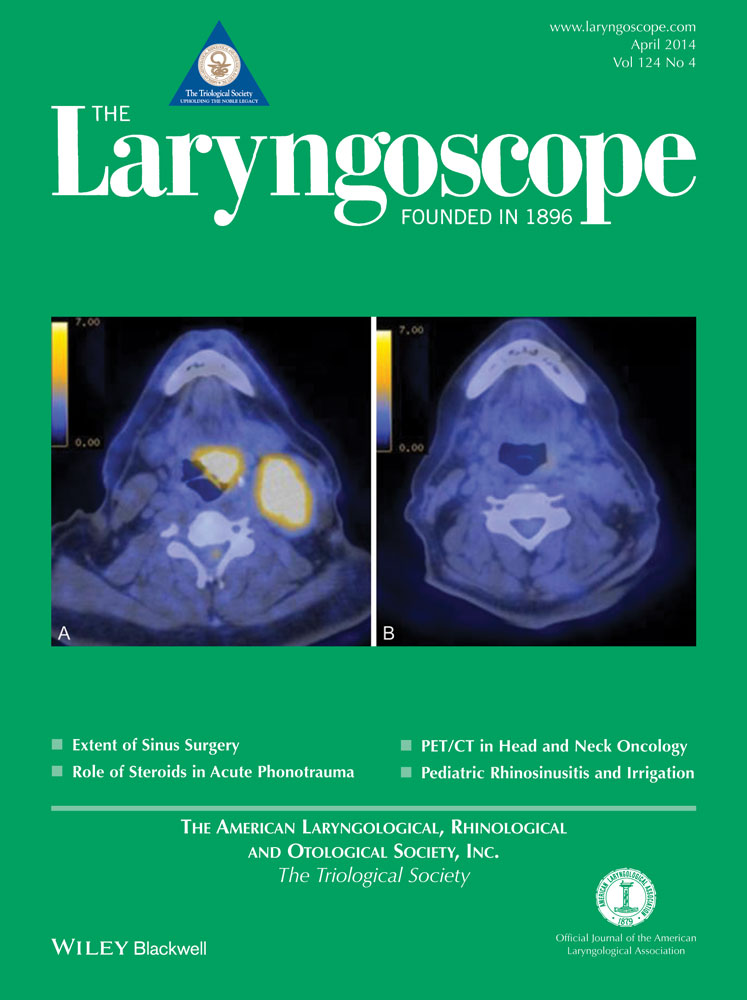Down syndrome: An electrophysiological and radiological profile
The authors have no funding, financial relationships, or conflicts of interest to disclose.
Abstract
Objectives/Hypothesis
To assess the hearing status of trisomy 21 patients by analyzing electrophysiological and radiological findings of any correlation between hearing impairment and major or minor inner ear malformations.
Study Design
Prospective radiological and electrophysiological study.
Methods
A group of 34 ears of Down syndrome subjects and 20 ears of a volunteer age- and sex-matched control group of 10 normal subjects were studied electrophysiologically by means of otoacoustic emissions and auditory brainstem response. Temporal bone computed tomography (CT) scans were carried out in both groups; radiological findings were compared. Inner ear structure measurements were applied attempting to disclose subtle bony labyrinthine anomalies. The findings from both groups were statistically analyzed employing the t test.
Results
The rate of sensorineural hearing loss (SNHL) in Down syndrome group was 41%. Temporal bone CT scans showed no ossicular malformation in all Down syndrome cases. Major inner ear abnormalities were disclosed in 5.8%; they corresponded to two cases of lateral semicircular canal dysplasia detected on CT images by visual inspection. The application of various inner ear structure measurements increased the overall detection rate of common inner ear malformations to 47%. A statistically significant correlation was found between hearing level and vestibule length (P = .009) and internal auditory canal length (P = .028). Vestibular aqueduct width was correlated to different otic abnormalities.
Conclusions
SNHL is mainly secondary to the underestimated subtle inner ear malformations that are adequately demonstrated by adopting standardized inner ear structure measurements on petrous bone imaging. Vestibular height and internal auditory canal length were correlated to SNHL.
Level of Evidence
3b. Laryngoscope, 124:E141–E147, 2014




